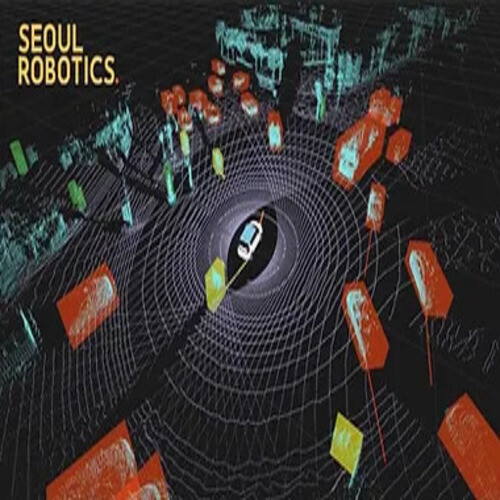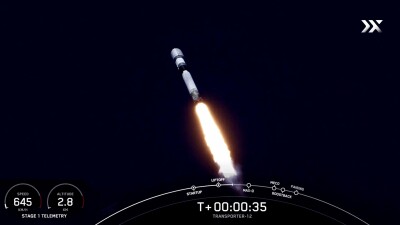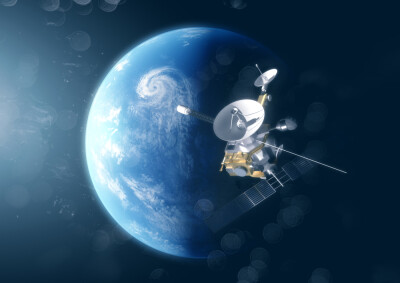In any conversation about the current state of the general technology space right now, it likely won’t take very long before the topic of autonomous vehicles comes up. Given how ubiquitous cars and driving are for many of us today, it’s certainly reasonable for everyone to be curious about the biggest development in the space in over a century. The market is still very much developing, but there’s a massive number of names – both legacy and newly-formed – working to get these products to a place where they can be on the roads in greater numbers. In terms of the hardware allowing it to move, while there is still some debate, lidar is generally considered a crucial component for the technology reaching its potential. For the most part, we’re talking about lidar sensors integrated with the vehicle, but Seoul Robotics is one company taking a different approach with sensors in regards to on-road traveling, and one of the ways they are starting out in the space is with their newly-announced Wrong-Way Driving Detection System.
One of the key members of the Seoul Robotics team in getting this system out to the market and functioning has been Jerone Floor, the company’s Vice President of Products & Solutions. Floor was kind enough to spend some time with Geo Week News to talk a bit about the company, this latest solution, and what it could mean for the future of driving.
In introducing Seoul Robotics, Floor notes that the company is “a 3D computer vision company,” and that while most companies like them are using cameras, they are using 3D sensors. In his words, that means they “see pixels as well as range, so we know how far away things are.” Cameras don’t necessarily produce that information. The company is being noticed by investors as well, recently announcing a $25 million Series B funding round. In hearing Floor talk about the Wrong-Way Driving Detection system, one can see from where the excitement is coming.
How the sensor-based system works
Many people may be surprised by how big of a problem wrong-way driving really is – even some who work in departments of transportation – but according to a report from the AAA Foundation, there were nearly 4,000 deaths resulting from wrong-way driving between 2010 and 2018, a clear sign that something new is needed to curb this dangerous activity. Some solutions already exist for this, but as discussed above most use camera-based systems. Seoul Robotics has taken a different approach for the problem, installing 3D sensors, mostly utilizing lidar, with future potential to add other sensors like radar and thermal imaging, to work on the issue.
These sensors are placed in either a trailer or attached to a light pole alongside the road, and mostly utilized on the side of an off-ramp, where most of the wrong-way driving occurs and where it’s early enough to be rectified without anyone being harmed. The sensor, which can cover a range between 40 and 200 meters to cover a four-lane off-ramp and can filter wrong-way movement as slow as 3mph, recently generated only one false alarm in a trial analyzing 100,000 vehicles. Once the sensors detects wrong-way movement, a sign along the road is triggered to light up and warn the driver to turn around before putting themselves and others in a dangerous situation. There are second and third checkpoints not long after in case the driver has still not turned around, and a video recording from Seoul Robotics’ partner, MH Corbin, will notify the system’s customer, as well local authorities in case they need to intervene. The driver will also continue to be notified and directed to turn around.
Keeping the system simple
While Seoul Robotics has larger aims for their sensor software, both in autonomous driving and for smart city development in general, Floor emphasized the prudence of starting with a very specific use case, and keeping things as simple as possible for their customers. Rather than trying to introduce a wide-ranging lidar system throughout a roadway system or city, they’ve started with an easy-to-understand solution that solves a key problem which needs solving, and one that demonstrably works.
It’s not just simplicity in terms of the solution and its scope, either. Seoul Robotics has ensured that the entire process is as simple as possible for its end users. That starts all the way with installation, too. Floor said, “We want to make sure that the people who have to physically install the system can install it. And what we did, especially on the hardware side, is we made it look like a camera system as much as possible, because people are trained on installing cameras for decades.” And once the lidar system is in place, scanning, and creating its point clouds, the end users don’t have to worry about trying to interpret that data. There is a computer on-site, either in the trailer or in a cabinet within the light tower, processing the data and sending the necessary alerts when a wrong-way driver is detected by the sensors.
Big Ideas For the Future
While Floor and Seoul Robotics are happy to start in a highly focused space, there are certainly ambitions for more from this technology. For instance, right now most of these sensors are placed along off-ramps (though some extend out to the highway), and have three levels of intervention, there is an idea for a fourth. If a driver still has not stopped and turned around after three notifications, Floor envisions a scenario where the sensors could “speak” directly with the firmware in a car to brake for them. He gives an example of a driver potentially suffering from a stroke while driving, which would obviously mean they could not stop themselves. That kind of intervention could potentially save lives. They are already working with BMW in the early phases of this technology, though it should be made clear that this is a long-term goal and not something happening next week.
Seoul Robotics also believes its sensor system, LV5 CTRL TWR, could be used to support the autonomous vehicle space. While Floor is careful to make clear that they do not see themselves as a replacement for current autonomous vehicle manufacturers and designers, their technology could help these companies overcome one of their biggest challenges: Navigating cities. Driving autonomously on highways has more or less been solved, but driving in cities, particularly older ones that were not designed around cars, is a bigger challenge. Floor envisions a future in which these 3D sensors can be placed on infrastructure around a city, particularly throughout an intersection, to “talk” to cars and direct them through certain areas.
Again, a lot of these goals are still a little ways down the road, but Seoul Robotics is already making their name with departments of transportation in the US, Europe, and Asia.






